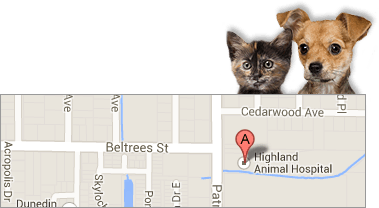Lyme disease is one of the more common diseases to be diagnosed in pets. Learn about the disease’s cause, symptoms, and treatment as your Dunedin veterinarian discusses it below.
Cause
The deer tick transmits Lyme disease. A bacteria called Borrelia burgdoferi is responsible for the infection, and it usually appears in dogs several hours after a tick has bitten them. Ticks like tall grasses and forested zones—if your dog regularly visits areas like these or you live near grassy fields or wooded areas, ticks are likely present.
Symptoms
Lameness and trouble walking is the most common symptom of Lyme disease in dogs. The joints swell, causing pain, which makes your dog favor one leg or side of the body.
Kidney problems, sensitivity to touch, difficulty breathing, fever, depression, loss of appetite, and even heart problems are other possible symptoms of Lyme disease. If you notice any of these symptoms, and especially if you spot a tick on your dog after the symptoms appear, take your dog to the veterinarian’s office as quickly as possible.
Treatment
Once your veterinarian examines your dog and confirms the Lyme disease diagnosis, a regimen of antibiotics is the usual treatment, the type and brand of which can vary. You’ll probably have to control your dog’s activity while he’s recovering. Ask your veterinarian about any more outpatient procedures you’ll need to be aware of.
Symptoms should decrease within three to five days of starting on antibiotics, and about a month’s worth of medicine should eradicate the disease. If your dog doesn’t seem to be getting better after five days, you should give your veterinarian a call.
Prevention
Whenever possible, don’t allow your dog to roam free in wooded or grassy environments where Lyme disease-carrying ticks are commonly found. Ask your Dunedin veterinarian for a recommendation on a tick prevention method, such as a spray, topical medication, or collar. In addition, check your dog’s body for ticks whenever he comes back inside.







Leave a Reply
You must be logged in to post a comment.